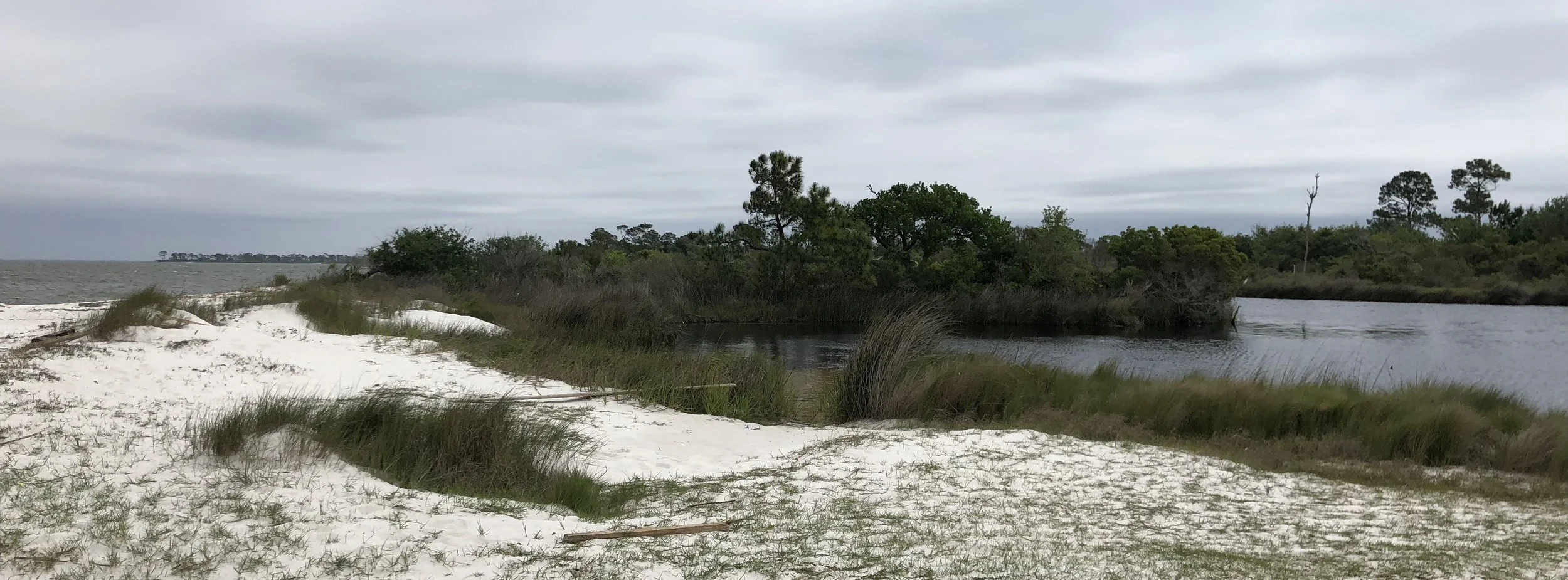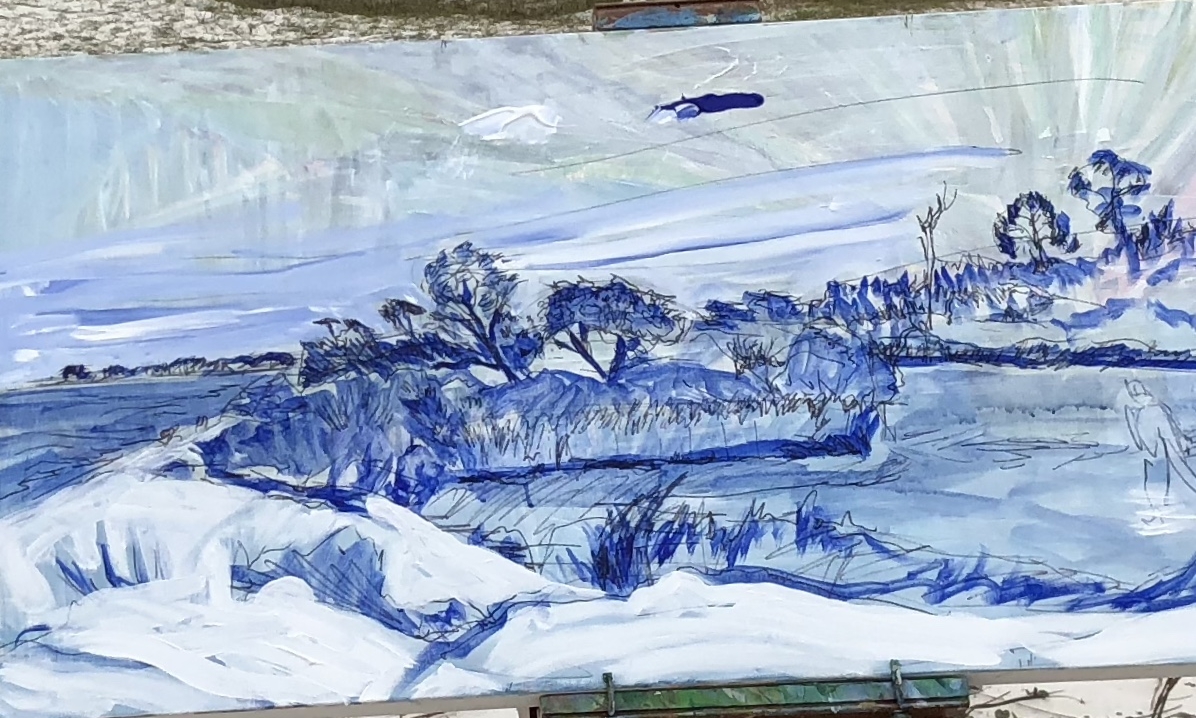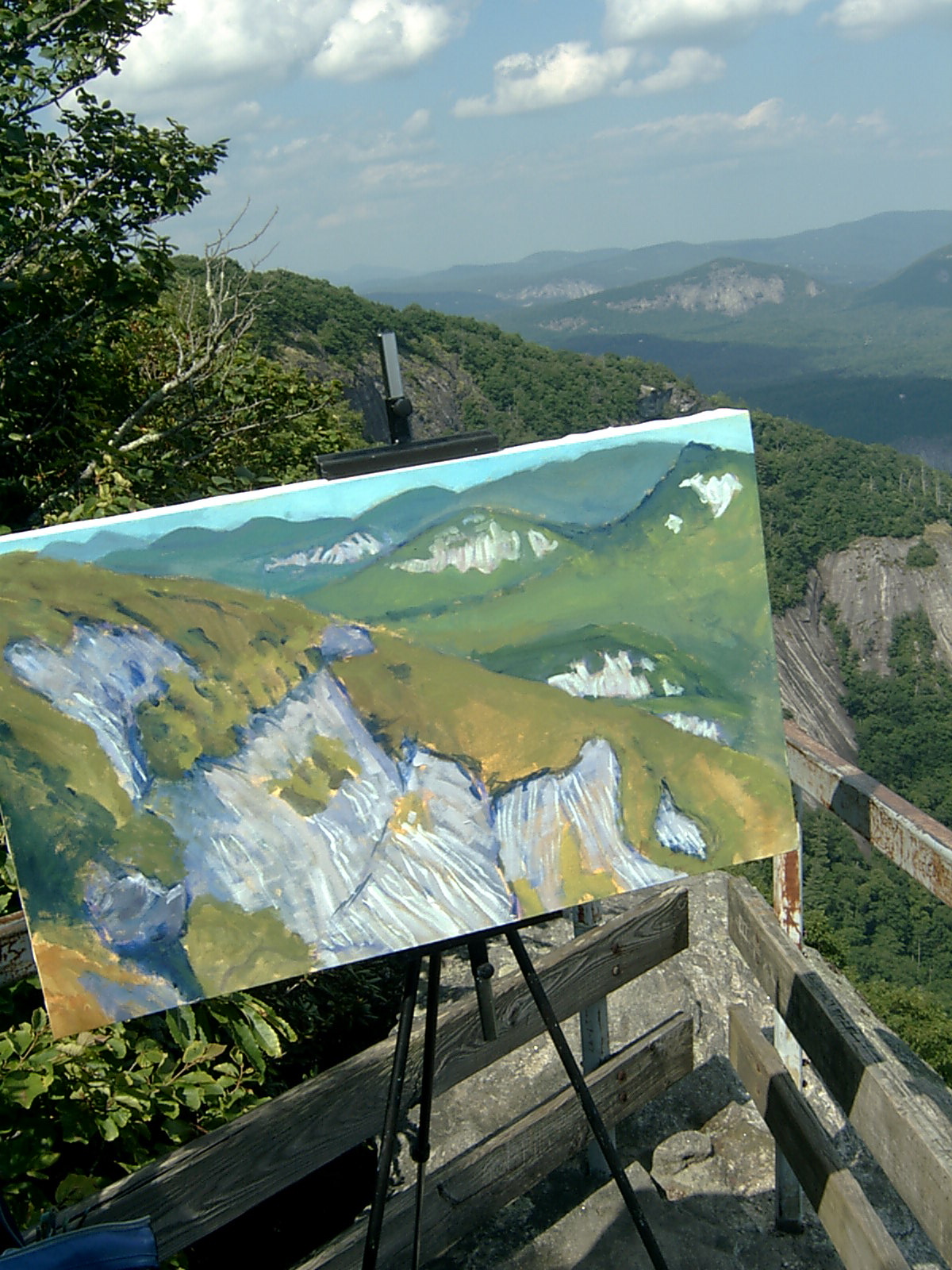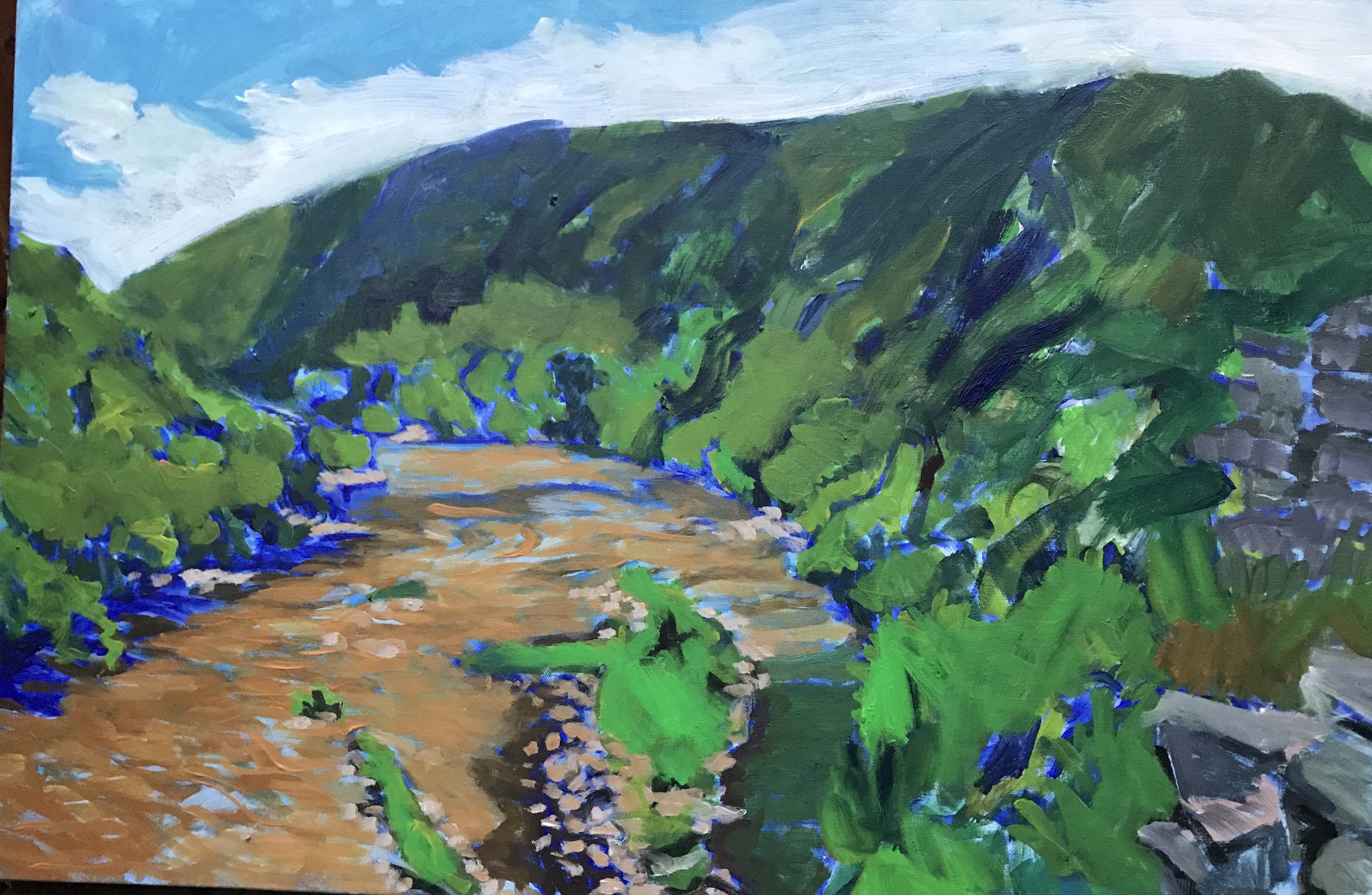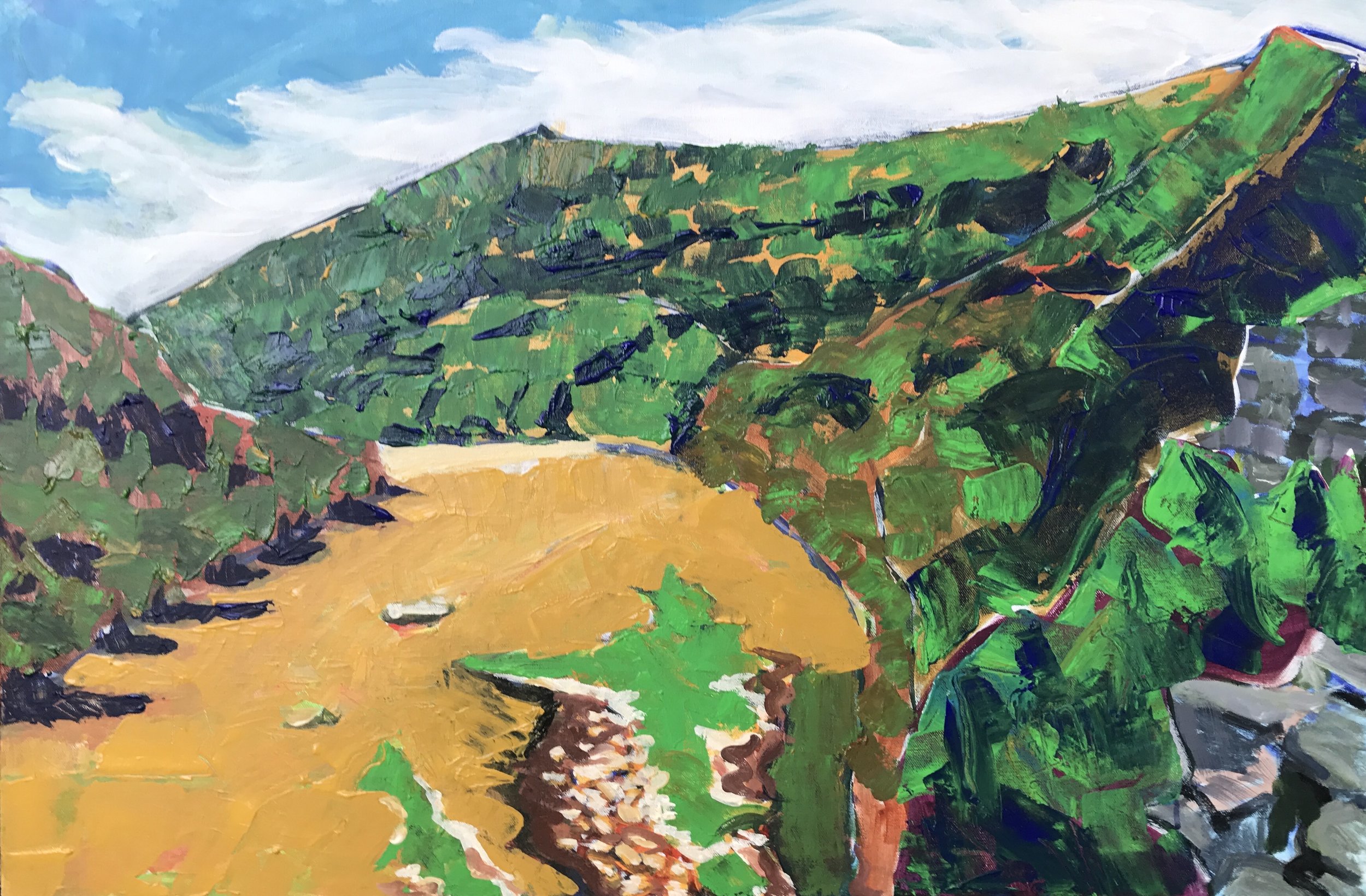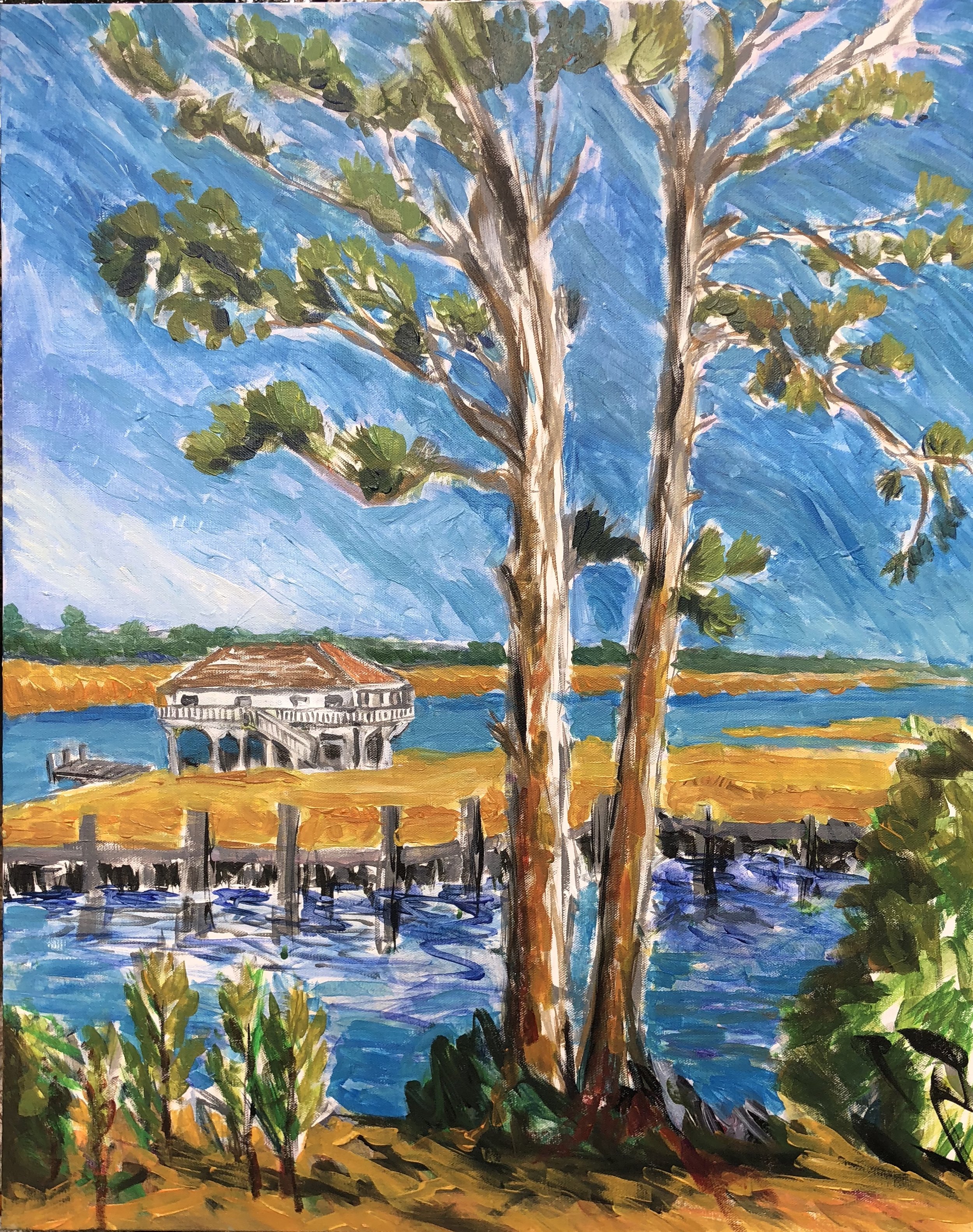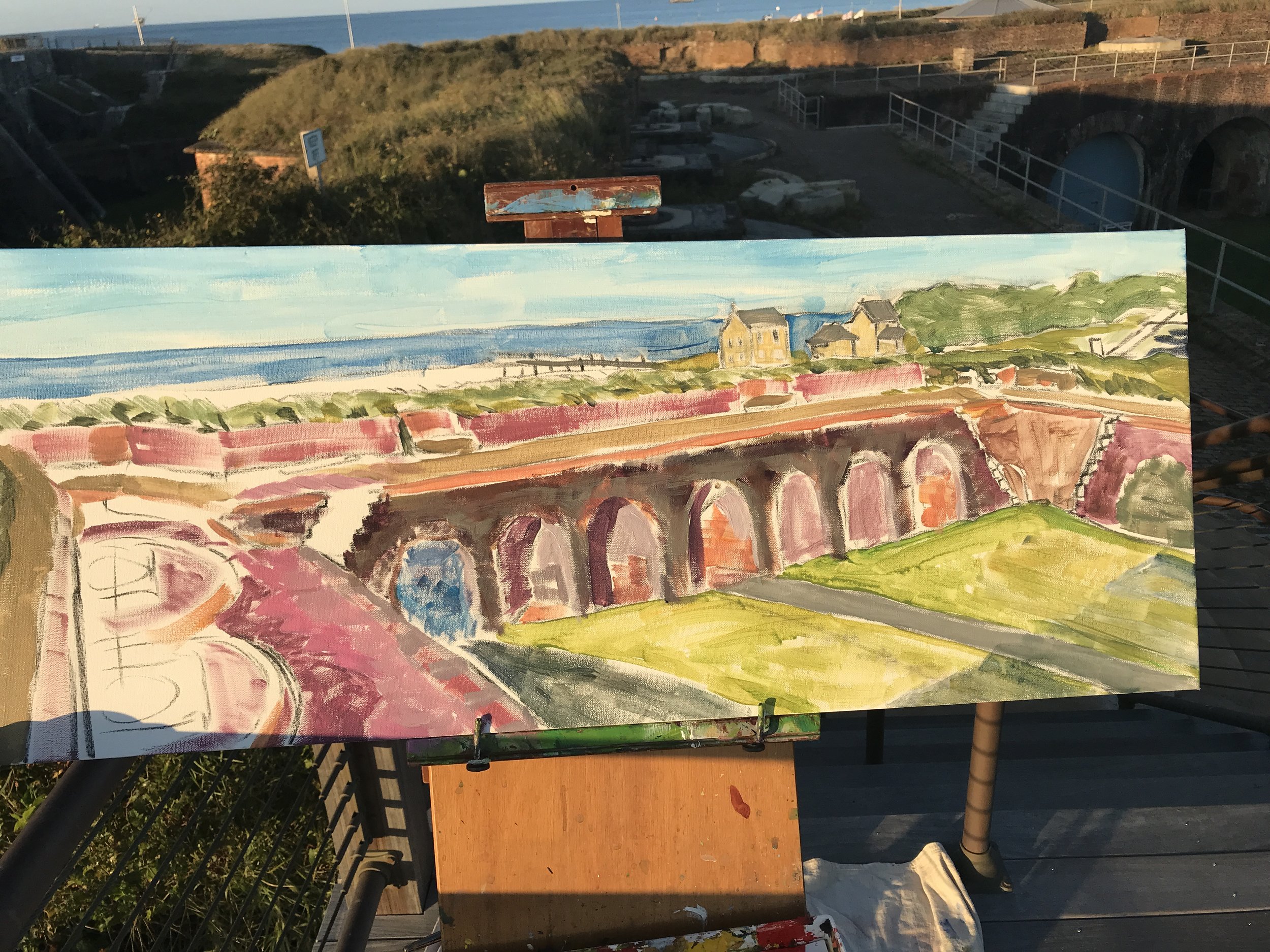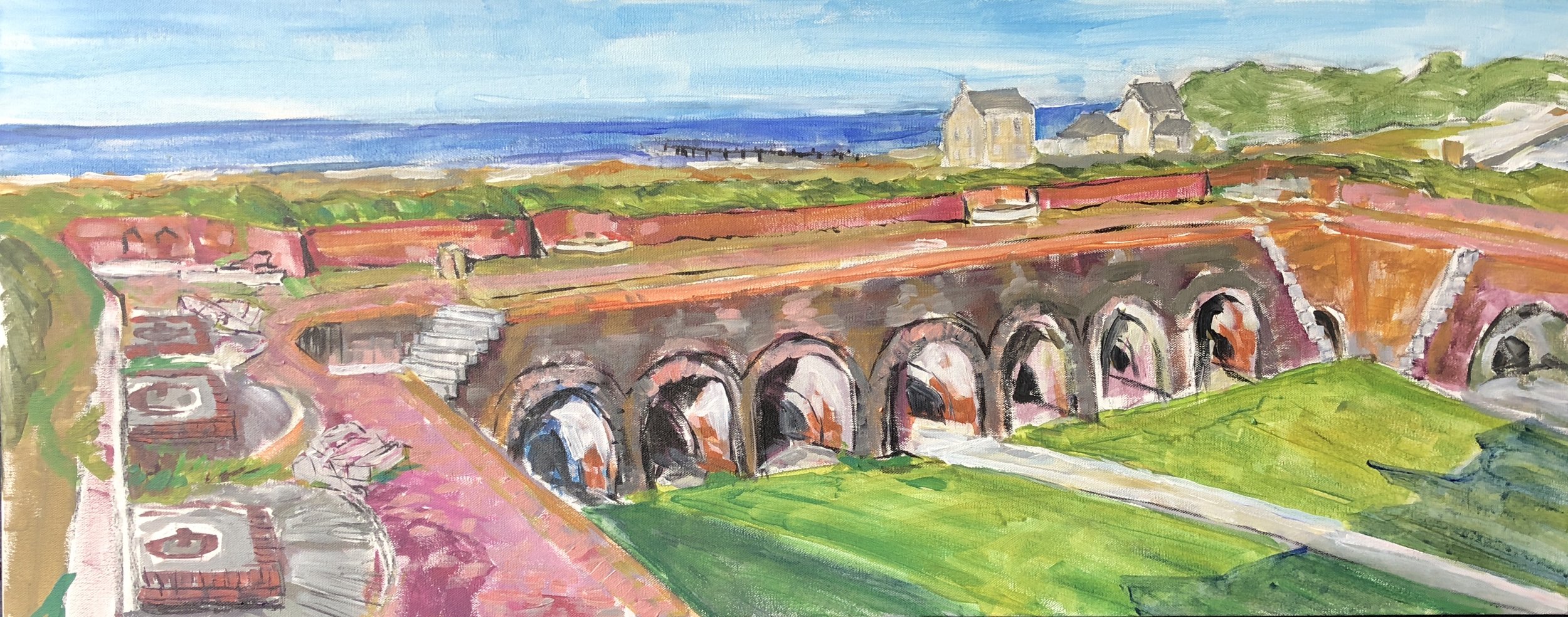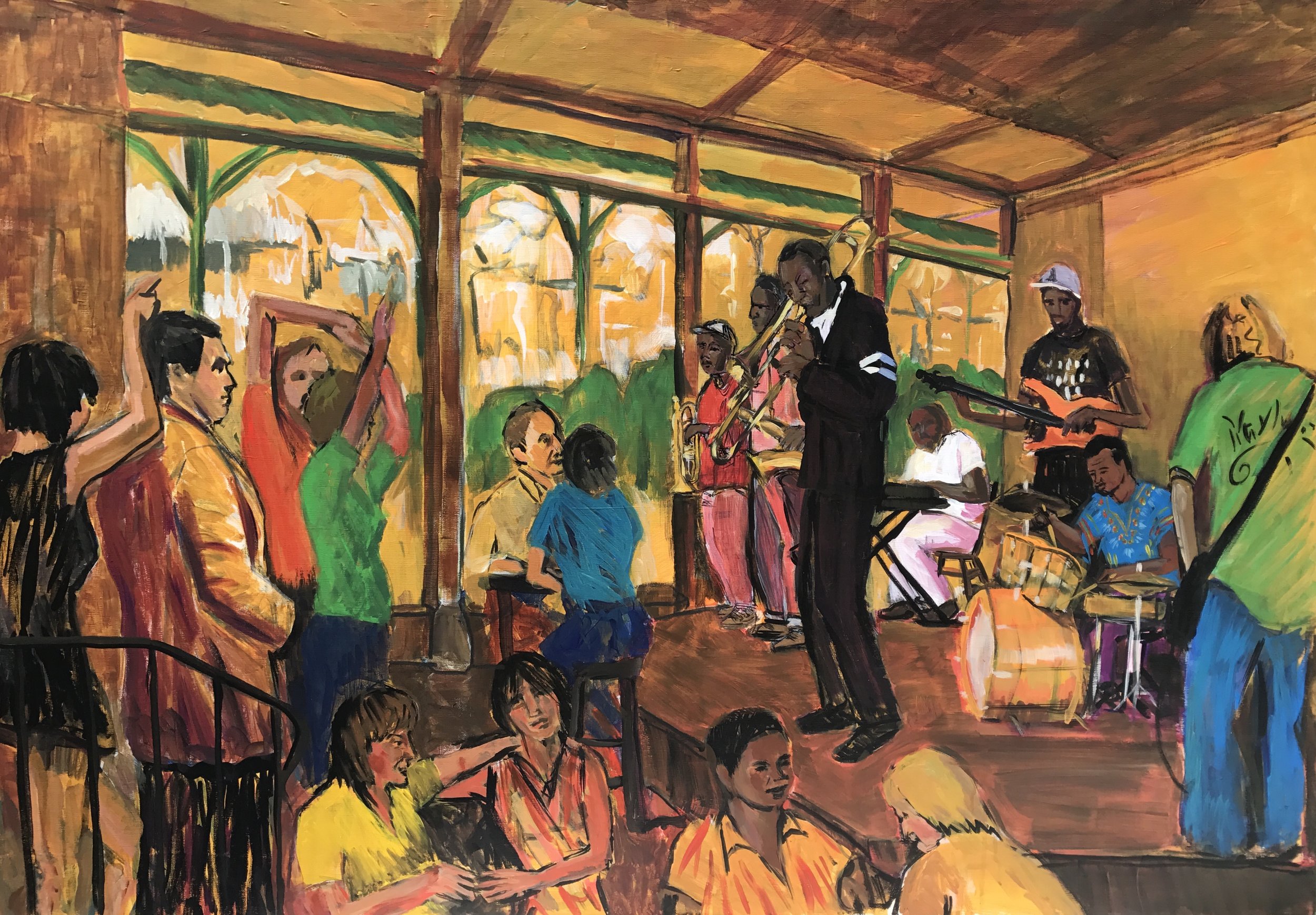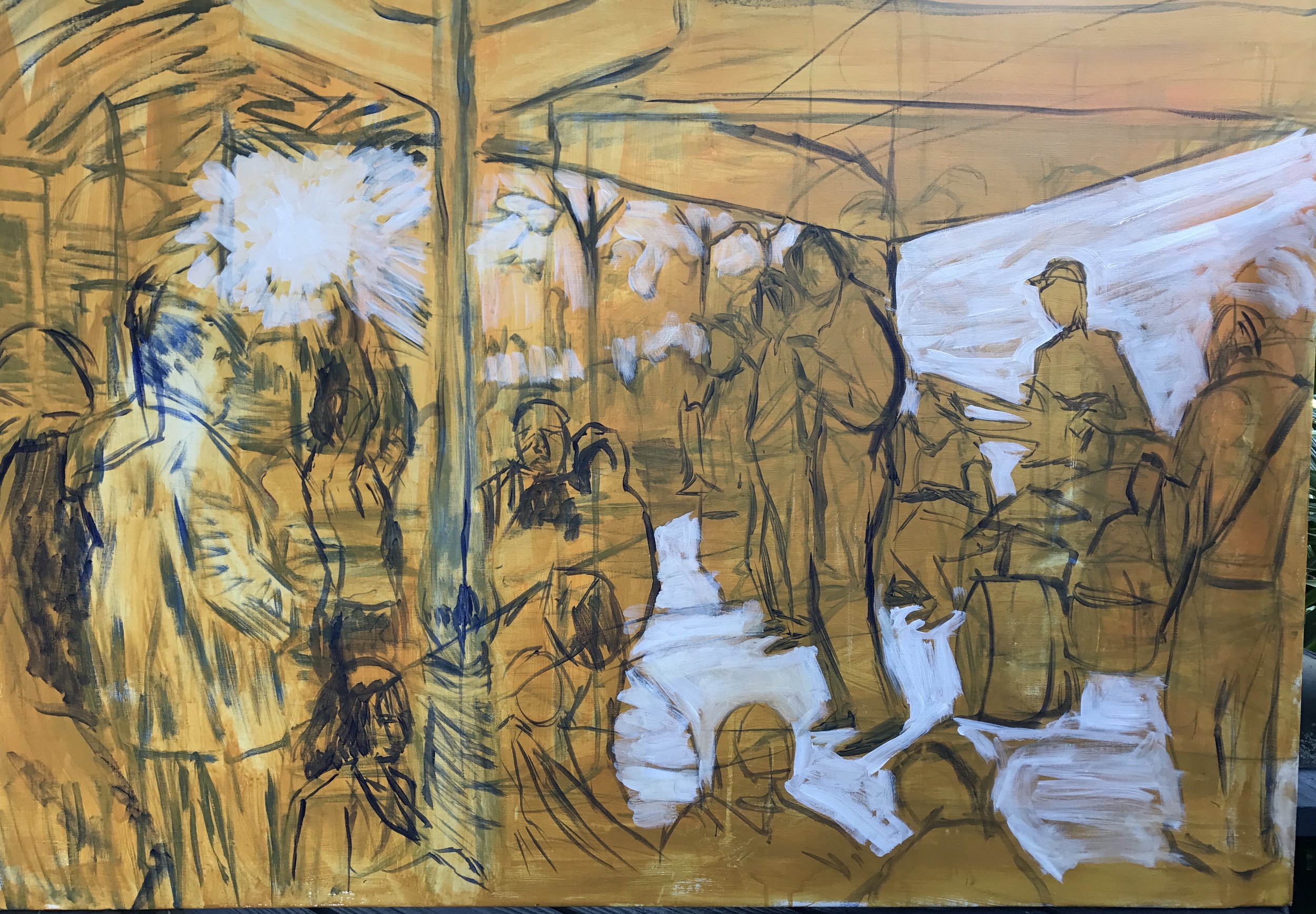A strong northern wind swept over Bon Secour Bay under an overcast sky when I started this piece. Christina showed me the location, a path from an abandoned subdivision cul de sac to the north shore of Fort Morgan, near the State Park area. Pelicans, blue and white herons, and a kingfisher set off as I approached. My easel was shaky with a larger canvas (24 x 48) and also unsuitable to hold my regular palette and water, so I simply applied some blue and white directly to the canvas in the center of the sky, and dispensed with the palette. I started out with a quick Sharpie sketch of the scene and then used a large round brush to work out the lines of the painting and the basic layers. The round gives a nice graphic quality and the large version tends to encourage a more gestural approach to lines. It also can hold enough paint to do a longer line on a big canvas. This one is 24x48.
I worked out the overall composition just in blue and white longer than I normally would. In the process the landscape became deeper and deeper blue in more locations. I began to add some greens, again applying a quantity of green, orange, and yellow ochre to the canvas, this time in the corner. Instead of pre-mixing, I simply picked up some of the colors and mixed them in place. This produced a few good effects but it also made for some gaudy colors.
A few people came and went, and I had one blue heron who stayed and watched me for about half an hour. I had done about all I could after 2 hours and had to deal with the remaining paint on the canvas and so I simply spread the yellow ochre in stripes. I also had to do something with the remaining blue and white in the sky, so I scrubbed that in. I liked the sky and the windblown look of the trees a lot.
Christina had gathered some wood and shells. I packed up. A side brace on the easel which had cracked earlier broke off. I pulled my things together and started down the trail to the truck. I heard a loud buzzing and a drone came into view overhead and in front of me appeared a team of nosy people in matching t-shirts. On the ferry back across Mobile Bay we met a Quebecois couple and I dredged up my rusty French to visit with them.
Back home, I had to correct a compositional error. The waterline on the lake to the right was higher than the horizon on the right. I realigned the lakeside waterline by lowering where the fringe marsh entered the water. I also stressed the sharp vertical line on the left side of the lake and reworked the small bit of marsh grass jutting out in the right foreground.
I used a mixing white thinned out with gel and a small amount of ultramarine blue to create a water surface. After several passes at this, I began to get something that worked. I turned to the bushes, marsh grass, and trees. I was trying to avoid the gaudy effect of the permanent green that was causing me trouble in another painting I had started. I made a mistake I had made before, which is to do endless variations of green without making them work structurally or have internal logic. This was a particular problem with the fringe marsh grasses. Here is where things stood partway through the day. Still some glam green and a lot of chaos. This is the lesson for me: nature is far less chaotic than we may perceive. Start with one place and work from point to point, and it becomes clearer.
Later I switched to a set of smaller bright brushes. I consolidated the fringe grass green into a generally uniform dark green, instead of the permanent green light over ultramarine blue. I also reworked the reflections of trees in the water and the ochre fringe along the far side of the lake. I added in reddish brown trunks and branches to the trees and some earth tone debris along the foreground. Toward the end I lowered the horizon on the right side to open up the trees and emphasize the roughness of the woods. I did very little to change the far horizon or the sky.
This is another scene that stays in the mainstream of what I have done most of my life. I could fault myself for not reaching further, or I could notice that I got this done in 2 days and I was grabbed almost instantly when I saw it. There were few initial decisions to make. I really enjoyed working with the paint on the canvas as a palette. I don't know how often I'll continue to do it, but it was very convenient.
